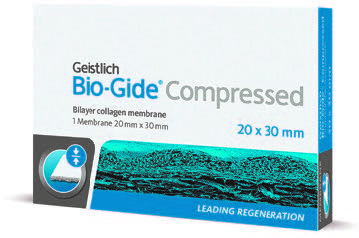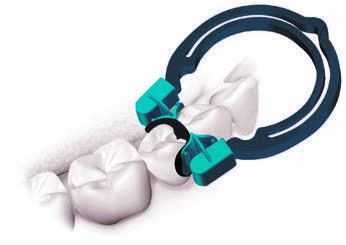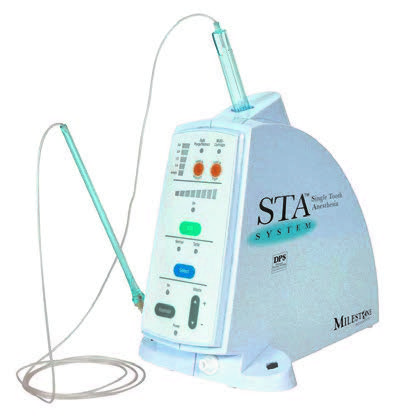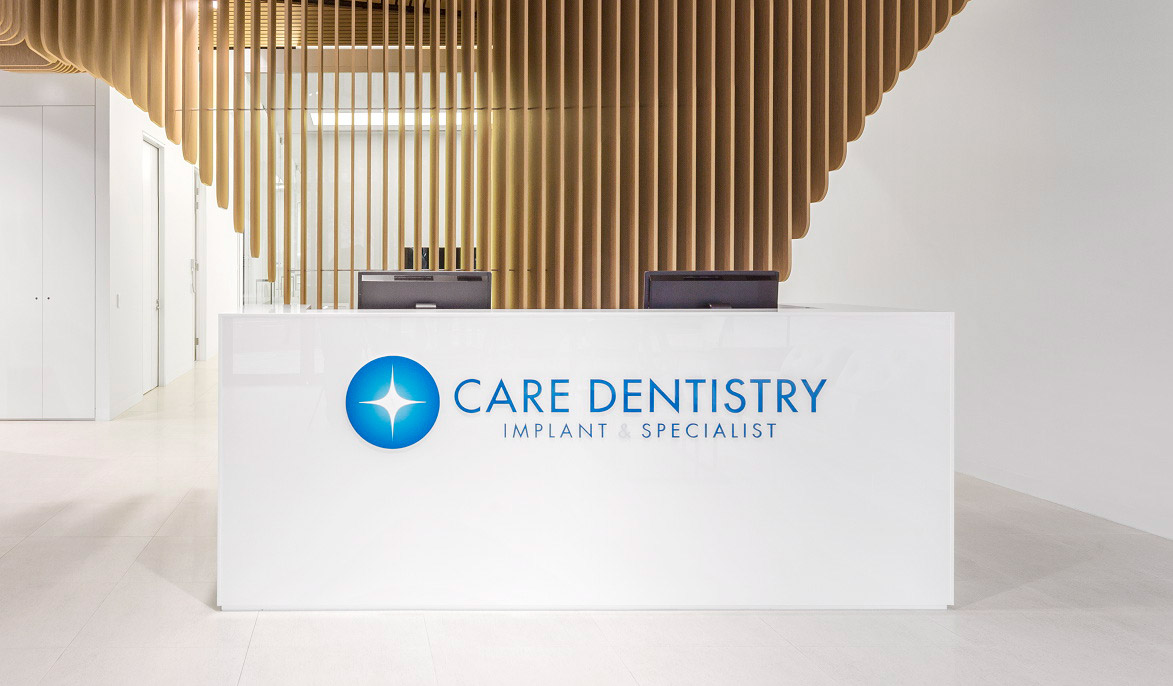Prosthodontics has continued to evolve as a multidisciplinary field of dentistry which involves fixed and removable prosthesis, maxi llofaci al prosthe sis,
implants and aesthetic dentistry. Nowadays, modern prosthodontics utilises all innovative solutions to meet all patients needs. Dental Asia sat down with one of our advisory board members, Dr. Christopher Ho, a leading Sydney-based prosthodontist, to know more about his beginnings, advice for practice owners, his thoughts on digital dentistry, his advocacy on continuing education and how he balances work and life.
Dr. Christopher Ho is a prosthodontist and the founder and principal of CARE Dentistry. He has completed his Bachelors of Dental Surgery with first class honours, a Graduate Diploma in Clinical Dentistry (Implant Dentistry), Doctorate in Clinical Dentistry (Prosthodontics) from the University of Sydney, and also a Masters of Clinical Dentistry (Prosthodontics) with Distinction from Kings College London. He is a Fellow of the Pierre Fauchard Academy, and a Fellow of the American College of Dentists, a national and international lecturer. Dr. Ho has held faculty positions with the University of Sydney, the Global Institute for Dental Education, Academy of Dental Excellence and is a Visiting Lecturer at Kings College London.
Working in a referral-based practice in implants and prosthodontics, Dr. Ho is a highly active member of the dental community, and was a former Oral B (Proctor and Gamble) Media Spokesperson in Australia. He has published in dental journals and several chapters
in textbooks, and is the editor of the Wiley-Blackwell textbook ‘Practical Procedures in Aesthetic Dentistry’.
Kindly discuss your beginnings as a dental professional. Did you always dream of being a dentist and why?
During my teenage years, I wore braces and spent a lot of time visiting my orthodontist and grew to know him well. His practice was busy, he had great taste in art and it seemed he enjoyed his profession with the constant and numerous interactions he had with his patients, myself included. My family always had the highest respect for dentists and I always remembered my visits with our family dentist, who had a great demeanour – this influenced and shaped my career inspirations. With this in mind, I originally wanted to be an orthodontist but eventually chose to specialise in prosthodontics as it is the specialty where clinicians lead a treatment plan as the so called “captain of the ship”.
Oftentimes, dentistry involves a multidisciplinary treatment and the prosthodontist directs other specialties while working various other stages of treatment. Hence, cases that are referred to prosthodontists are normally more complex or ones that have gone wrong and we not only help in restoring patient’s function and smile but also give back their self-esteem and confidence. For me, transforming patients’ lives is one of the most rewarding experiences in practice.
Aside from prosthodontics, I have a great interest in surgery. About 90% of my practice is related to implant therapy which entails a significant amount in implant surgeries. I like to incorporate
perio-plastic surgery in my approach to enhance my final results with soft tissue aesthetics which I have learned from my colleagues, who are periodontists, as I strive to continually achieve perfection in my practice.
Being established in the dental industry, what advice could you give other practice owners?
Budding practice owners should focus on building a great team and getting systems in place to provide a high level of service to their patients. I have always considered that the little things count, from ensuring how a greeting is made on the phone to how patients are introduced to the practice. Good examples are how airlines or fine hotels address their patrons and deliver a great service. Furthermore they need to have a marketing plan in place to bring patients through the door to experience a level of dentistry they have not been used to. One of my tips is to provide patients something that they have never experienced before. Maybe this might be an intra-oral camera, or using intra-oral DSLR photographs and sitting patients up rather than supine in non-threatening manner, where patients can sit and discuss treatment. It might be the use of smile design applications that allow patients to visualise treatment, or the use of Wand local anaesthetic that can provide a virtually painless injection.
It is easy for someone to complain about a dentist, but to find something positive about what a dentist does is something that I want my patients to experience, and then talk about their great experience to their friends and colleagues. It is always my goal that patients can talk positively about their visit.
Moreover, budding practice owners should find a mentor or a colleague to bounce ideas across as they may provide invaluable advice in how to build a practice. These mentors may have made mistakes in the past, and instead of making similar ones it makes good sense to learn from them. These mentors can help accelerate your practice growth and guide you to success.
Currently, CARE Dentistry is one of the leading dental centres in Sydney, Australia. This does not happen overnight. How did you achieve this success and recognition from your patients and peers?
Initially, I began working as a general dentist for very committed well known dentists and clinicians. It was a great start being exposed to dentists who are dedicated and passionate about the profession. Eventually, I decided to venture out on my own and create a practice with a brand, ideas, goals and visions that I envisaged. This is now CARE Dentistry which I founded and I am a principal dentist overseeing 13 other general dentists, specialists and dental hygienists.
First of all, I have always believed in “hard work”, nothing comes easy and one has to endeavour through hardships in building the practice of your dreams. It all starts with the patient and providing a service that over-delivers and is one that a patient can talk about to their friends and colleagues. Communicating the treatment plan, wowing patients with customer service, and then providing them with beautiful dentistry will always bring in more referrals. Secondly, having the right team is crucial. My team of over 40 staff have been an inspiration and are the impetus to our success. Working synergistically with my team, we are pushing together making work efficient and effortless.
Digitalisation is the future of modern dentistry. What are the latest digital innovations that your practice has been utilising?
I think there is a changing paradigm with digital dentistry and we have seen the explosion of this within our dental practices. My practice is at the forefront of this technology with the use of Trios 3Shape intra-oral scanning, as well as the use of 3Shape applications such as SmileDesign and patient monitoring. We also utilise 3D printing with both the Formlab2 and Nextdent 5100 printers, and also have the Roland 5 axis mill for milling restorations. Additionally we have digital radiography and CBCT imaging available and run a virtual office with most of our records being computerised.
Particularly, intraoral scanning with Trios has been a game changer for our practice with the ability to digitally take impressions for patients for study models, occlusal splints, mandibular advancement devices, conventional crown and bridge as well as implants. The digital experience provides faster and better patient experience with no gagging, poor taste or impression materials locking into undercuts. It also provides better dentistry as digital impressions have a high level of accuracy without the worry of bubbles, drags, pulls, moisture contamination, or disinfection risk. Furthermore, the time for impression taking is reduced at the same time enabling us to archive patient’s data and communicate data digitally.
Additionally, digital planning of dental implant placements has allowed merging of intraoral scans with CBCT to fabricate surgical guides for accurate implant placement. 3D printing has allowed printing of dental models, and the ability to fabricate surgical guides at a fraction of the cost of previous technologies.
Our practice constantly upgrades equipment and materials. We see technology as evolving and one must keep up with advancements in dentistry. Modern equipment helps provide efficient workflows allowing patients to have improved outcomes. There are advantages with a lot of newer workflows that are possible especially in CAD/CAM dentistry with the possibility of using monolithic restorations. Thanks to the progressive nature of our profession, we have witnessed numerous developments with materials and equipment over the past few years that have allowed us to deliver state-of-the-art care to our patients.



Being an avid lecturer and an advocate of education, why do you think continuing dental education (CDE) is vital to dental professionals?
Continuing dental education is vitally important as dentistry continuously evolves, and often techniques and materials launched are completely different to the ones that were taught when we were in dental school. In recent times, for example, we have seen the explosion of clear aligners, laser dentistry, rotary endodontics, digital smile design, CAD/CAM dentistry and intra-oral scanning. With these new developments, it is a prerequisite to have dental training to master these new concepts. The confidence one develops with further training translates into improved communication with patients and maintaining the best practice. Additionally, I think that CDE motivates clinicians, keeping them interested in their profession as continually learning and improving ones skill keeps the enthusiasm and passion alive. This passion comes through with your approach to patients and how one interacts with the team. Hence, my advice is to keep the passion by continually learning and developing as a dentist.
What is your principle in life and how do you incorporate this into your practice?
I’ve always valued doing the best that I can while doing unto others as what you want others to do unto you, and I
believe that true success can only be achieved if you are professional, ethical, and empathetic. As dentists we have been given an important responsibility, and it is an honour to be in our profession. Personally, I am always trying to improve in my craft along with my interactions with both my team and patients.
It is no secret that being successful requires a lot of hard work, practice, and dedication. The “10,000-Hour Rule” by Anders Ericson (also mentioned in Malcom Gladwell’s “Outliers”) concludes that “many characteristics once believed to reflect innate talent are actually the result of intense practice extended for a minimum of 10 years.” I believe that to be the best requires motivation and a lifetime commitment to continually improve both as a dentist and a leader.
What is next for you and for digital dentistry/technology in the near future?
My practice will be expanding the teaching institute – CARE dental academy to accommodate more dentists for training. We’ve also incorporated livestream technology to conduct and broadcast live surgeries and training.
Digital dentistry will explode in Asia, with the stream of new market players offering competitive cost entry to intra-oral scanning units. I see a steady growth on the uptake of digital applications for patient education and treatment planning, allowing clinicians to provide better dentistry through safer implant placement with guided surgery. The adoption of CAD/CAM dentistry and 3D printing will also allow dental practices in-house fabrication of their own aligners, splints, and restorations.
As I have had the opportunity to be involved with product development and testing alongside different manufacturers, I can say that the next three to five years will be exciting for dentists with the emergence of new products that will certainly invigorate dental practices.
Word of Mouth
by Dr. Christoper Ho
This issue we look into some products that Dr.Christopher Ho considers very useful in making his practice efficient. Dentistry is a constant battle with tongues, fluids and bacteria, not to mention, practitioners have to deal with the patient’s psyche and staff as well. Finding those products that make a practitioner’s life a little bit easier can hopefully bring a smile to all our faces by the end of the day.
Biogide compressed (Geistlich)

A new resorbable membrane has been developed by Geistlich for tissue regeneration. It is a twin to Biogide in that it consists of porcine collagen with the same barrier function and resorption time. However, the differences are in the handling and application. It possesses a smoother surface, a firmer feel and it is easier to cut. For those that prefer a sturdier membrane, this may be preferred and in particular may suit those wanting to carry out larger regenerations and tacking of the membranes. It is all about clinician preference and Geistlich has released this membrane to cater for those that prefer a slightly stiffer membrane.
myQuickmat Forte Kit (SDI)

There is a new sectional matrix system on the market available from SDI called myQuickmat and as an alternative to the current systems on the market it has some advantages for use.
The rings provide strong tooth separation in order to create excellent contact points in the restoration of Class II restorations. It is autoclavable and the plastic tines ensure a perfect adaptation of the matrix to palatine/lingual and buccal walls, reducing the need for finishing steps and therefore saving time. What is unique is that the tines are replaceable so that this ensures durability to the system. Often with other systems, the plastic tines pick up bond and also degrade reducing the life of these systems. With the plastic tines being interchangeable, this should ensure improved longevity of the rings, by just changing the tines. In addition, the metal rings can be activated to increase the active separation if needed when they loosen over the time. Moreover, the system comes with LumiContrast sectional matrices which are dark-blue matrices that increase contrast and reduce glare effect, especially while using loupes or microscopes.
Wand Milestone Scientific

“I didn’t feel a thing” is a nice compliment that patients give when patients receive an injection and often commented upon receiving injections from this computer assisted system for local anaesthesia. The machine enables users to control the flow rate and more importantly the pressure of the anaesthetic fluid being injected. It is normally the pressure of the anaesthetic being injected too quickly that causes discomfort with injections. Hence, even the dreaded palatal injections are often a breeze and virtually painless. This technique also allows the use of intraligamentary techniques for single tooth anaesthesia as well as techniques such as the Anterior Middle Superior Alveolar (AMSA) injection technique which can achieve pulpal anaesthesia from the maxillary central incisor to the second premolar – including the palatal tissue from a single injection in the palate between the premolars.
Interview by Jamie Tam from Dental Asia

